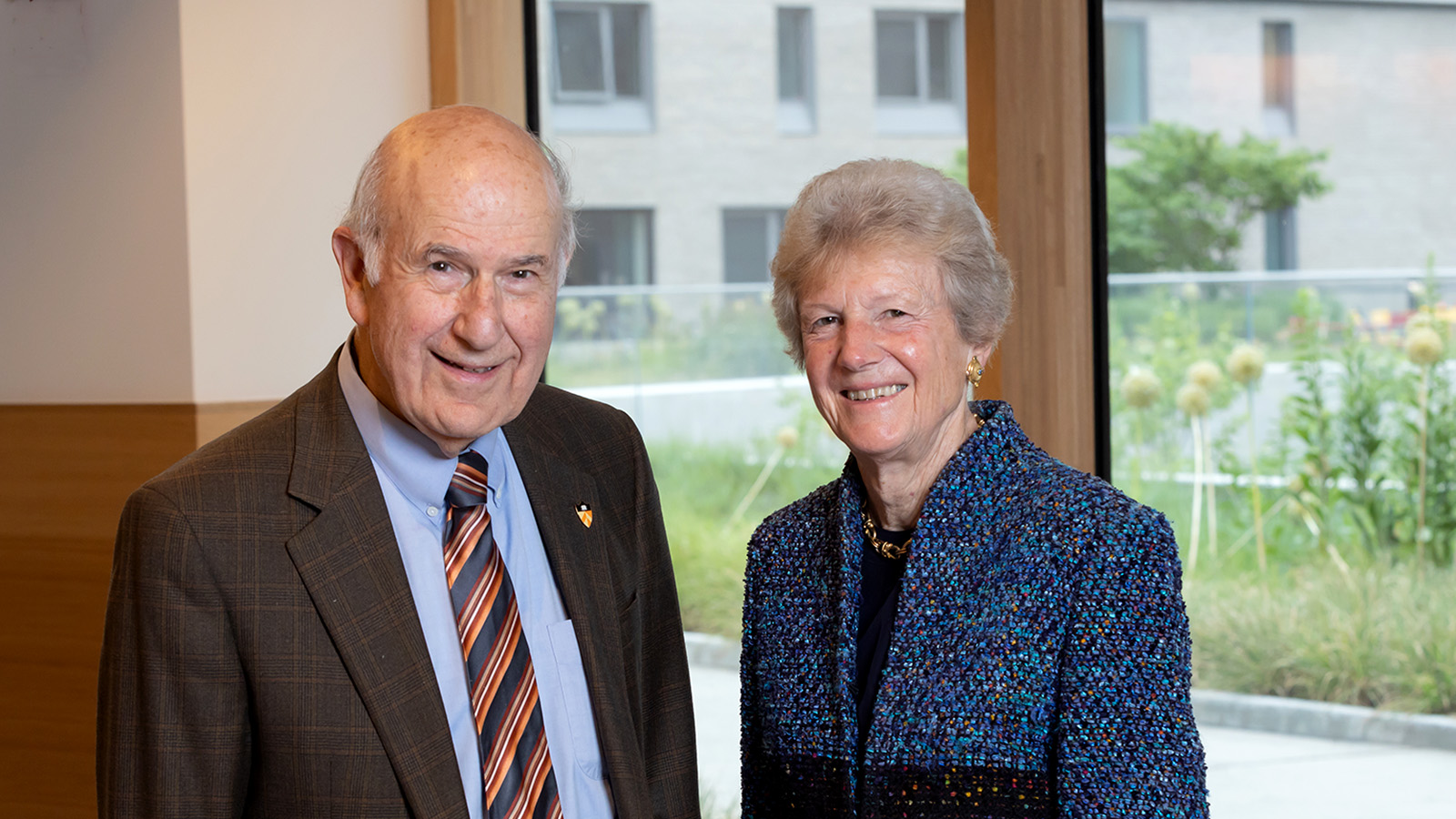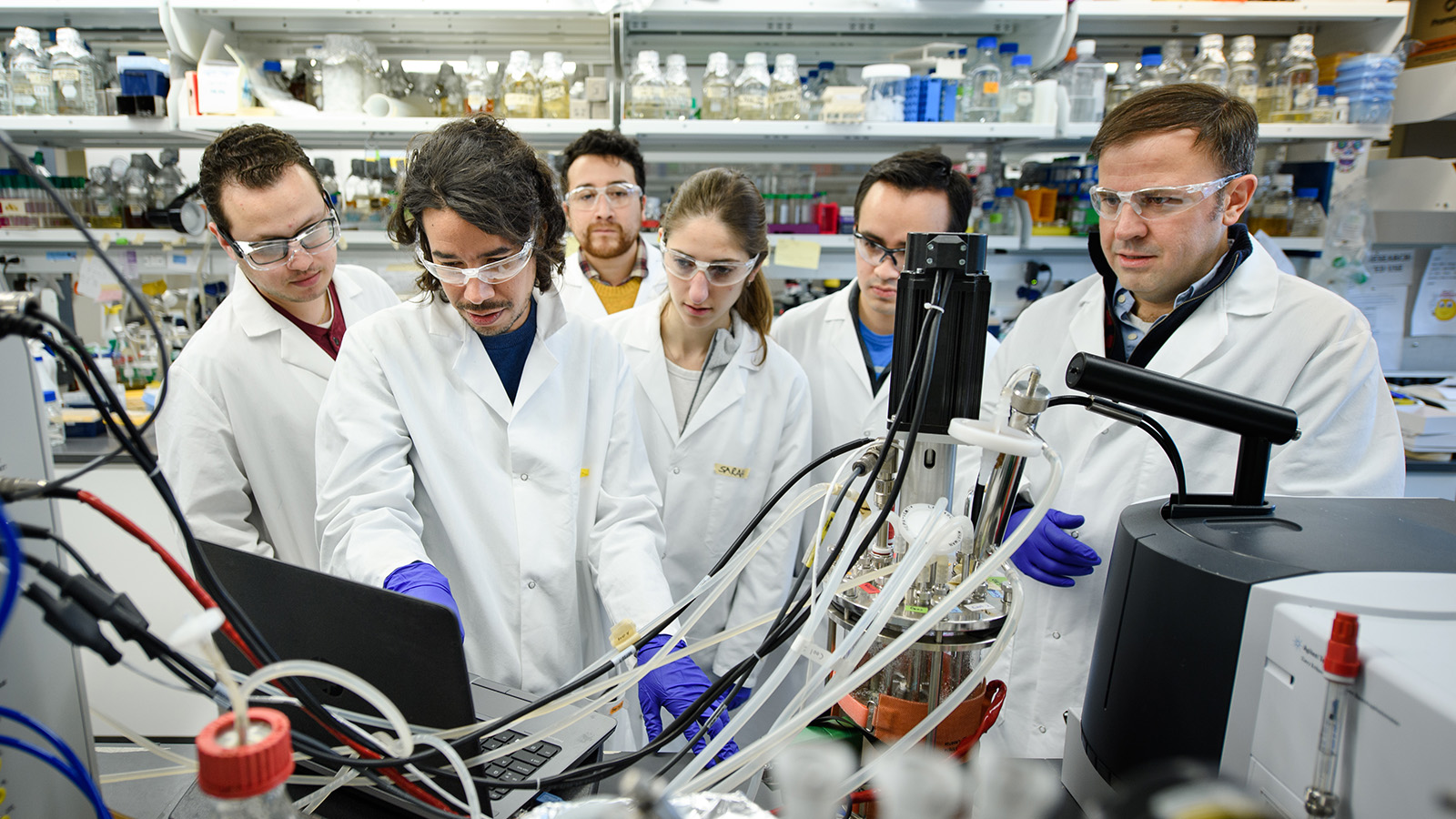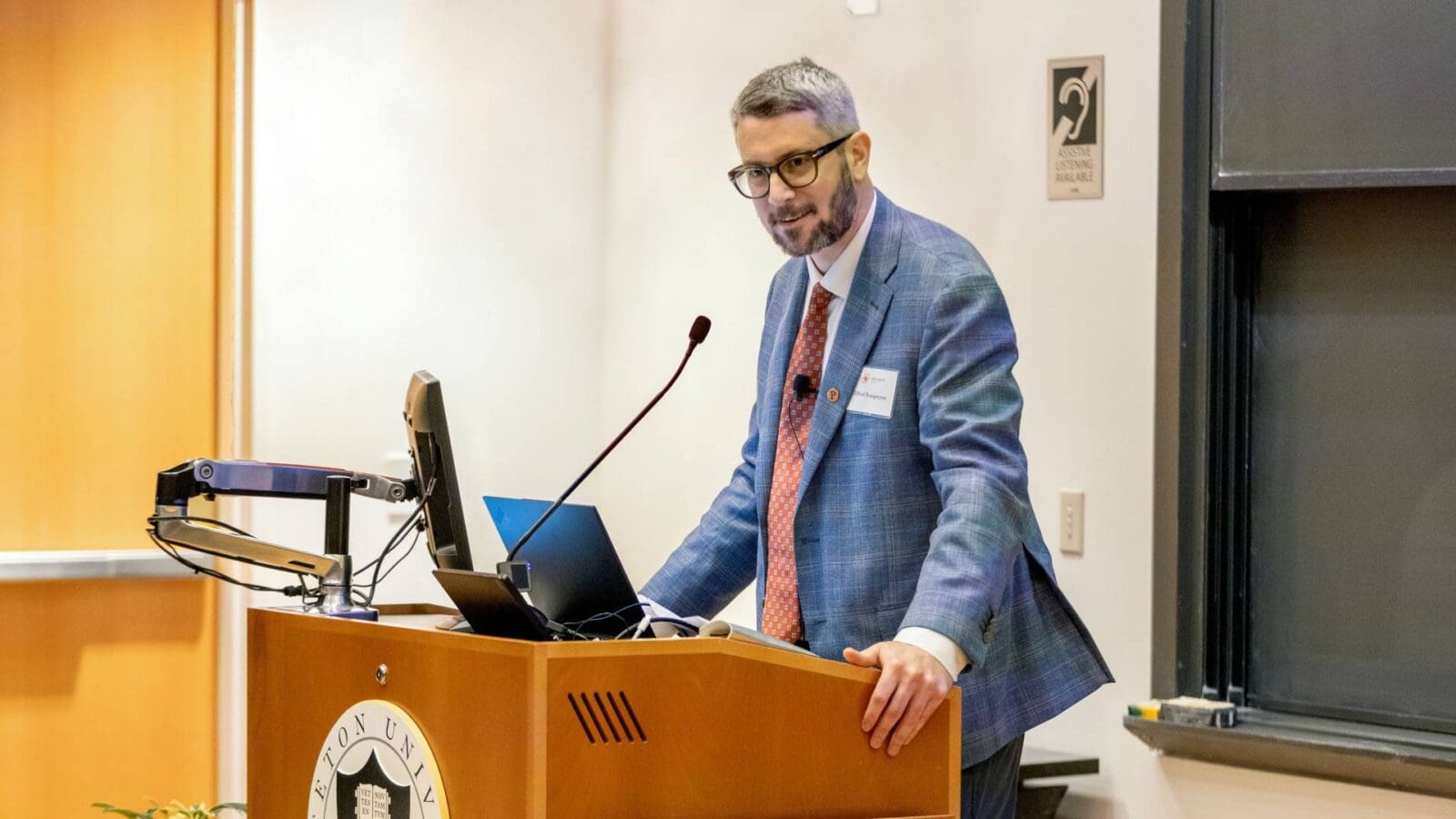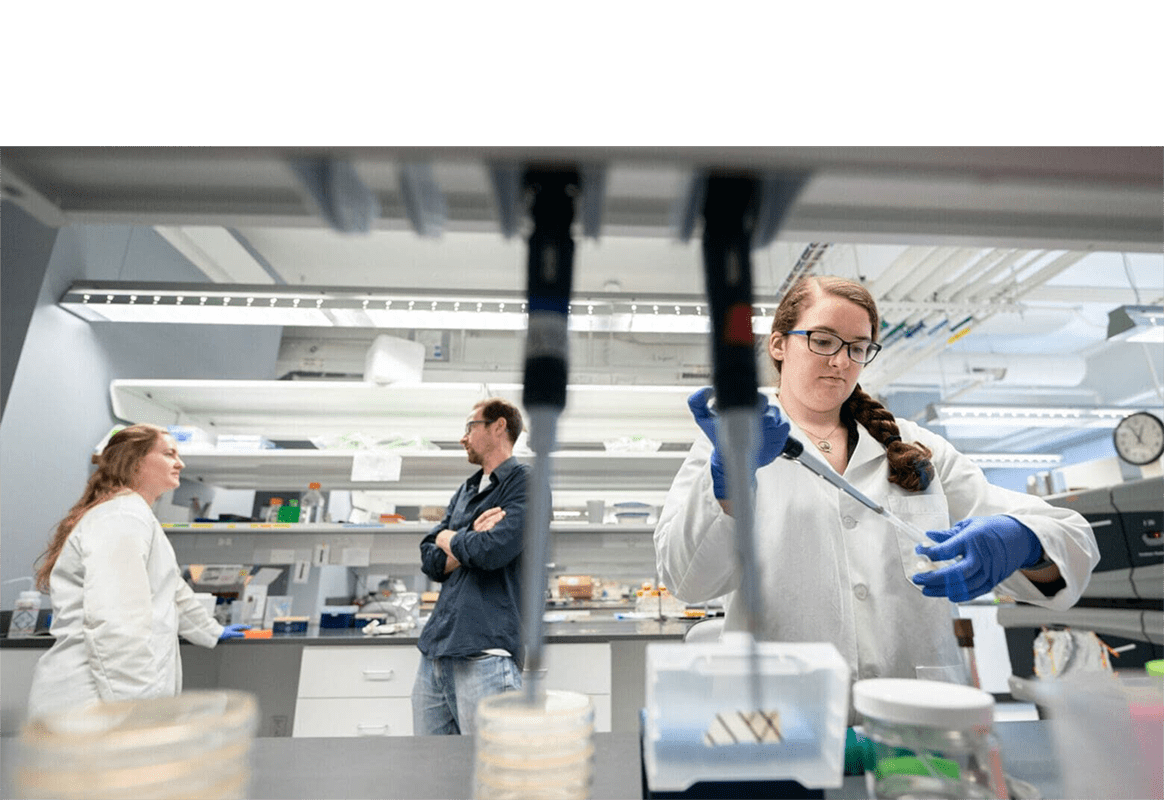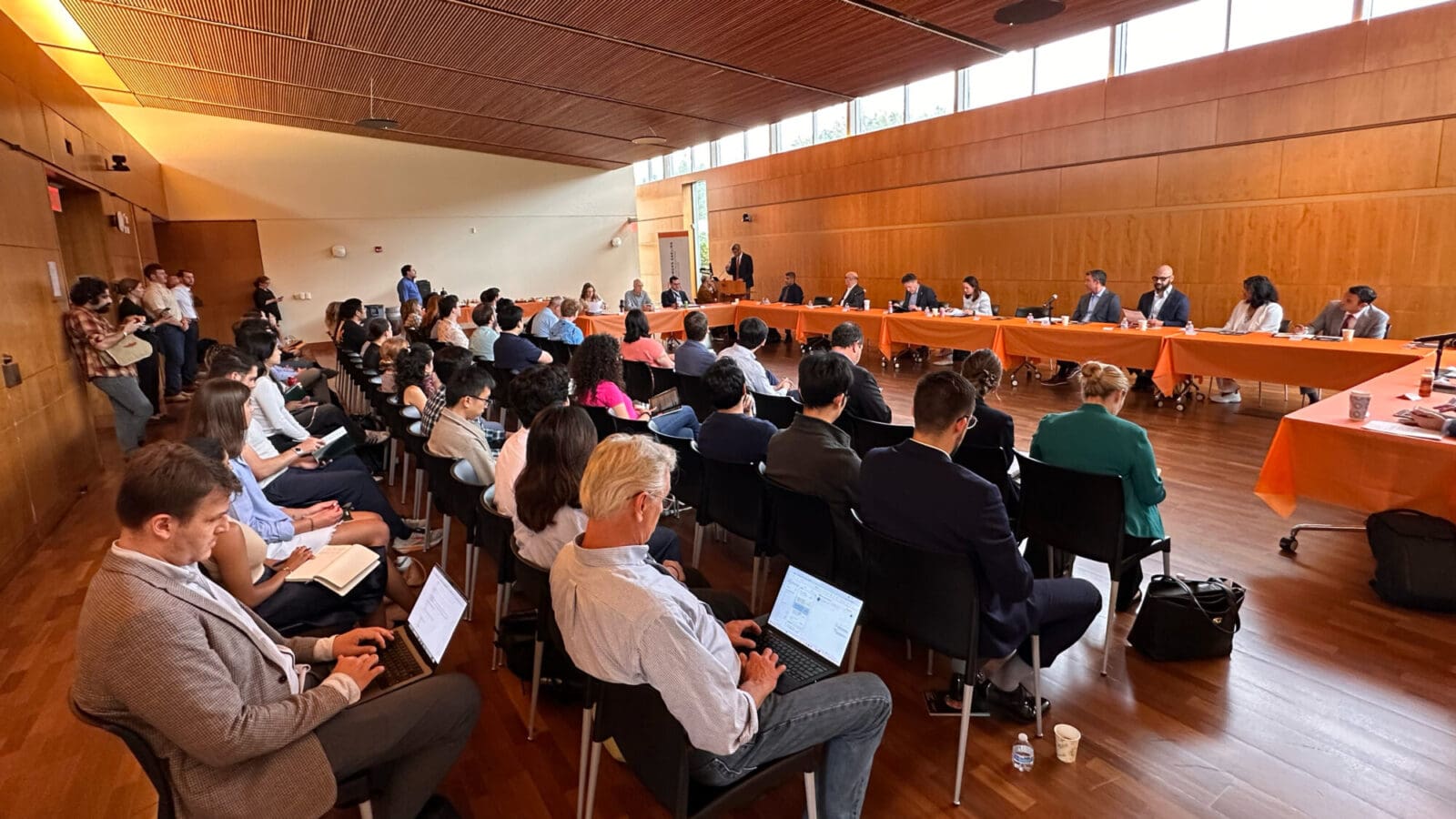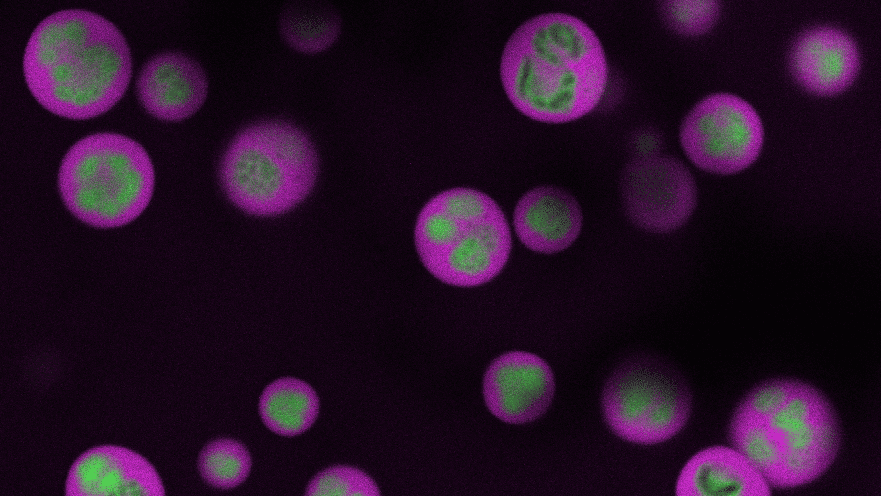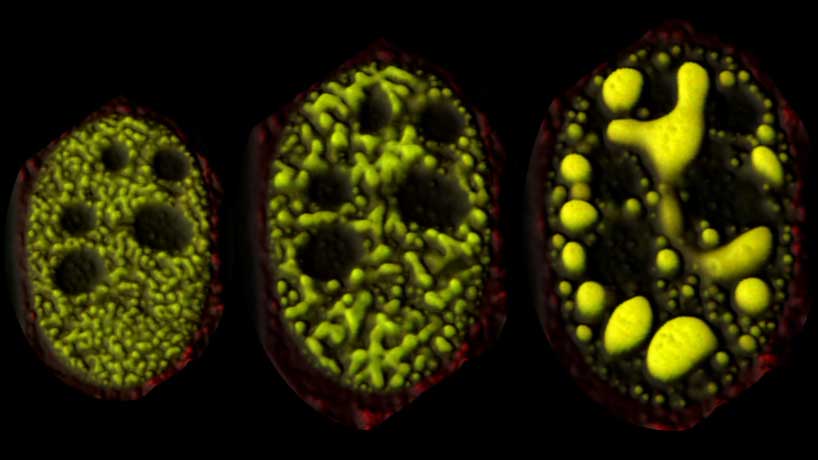
In bioengineering, technology and science move forward in concert
By
on
This article is from the Design for Humanity issue of Equad News magazine.
“The scientific enterprise is often snail paced, and then something comes along and catapults it to the next level,” said Brangwynne, the June K. Wu ’92 Professor of Chemical and Biological Engineering. “Usually, that something is technology.”
Asked for a few examples, Brangwynne rattles off a string of recent breakthroughs: green fluorescent proteins that allow scientists to probe cellular operations; super-resolution microscopes, “suddenly, the glasses are not foggy;” RNA interference and CRISPR, which allow science to explore changes to cellular function.
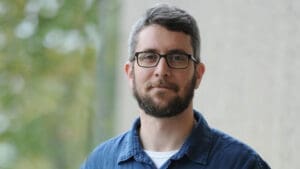
“All of these are transformative,” Brangwynne said.
Brangwynne has direct experience. As a postdoctoral researcher in 2009, he postulated the concept that key organelles performing functions inside cells form through phase separation, like rain drops condensing from water vapor. The insight has proven central to both understanding how cells operate and how they can misfire in ways that lead to disease.
Over the next decade, Brangwynne’s lab has developed new techniques that allowed researchers to further explore his theory. Among them, harnessing light-sensitive proteins for triggering phase separation with lasers.
Brangwynne and colleagues have recently started a company, Nereid Therapeutics, to translate technical and scientific advances to the market. Nereid is deploying technologies from the Brangwynne lab to developing therapies for cancers and neurodegenerative diseases.
Embracing technological innovation as central to scientific discovery is a priority for the Bioengineering Institute, Brangwynne said.
“Once you develop new technologies in the service of discovery, you are going to find there are a lot of other potential applications,” Brangwynne said. “This is at the heart of Princeton Bioengineering.”
